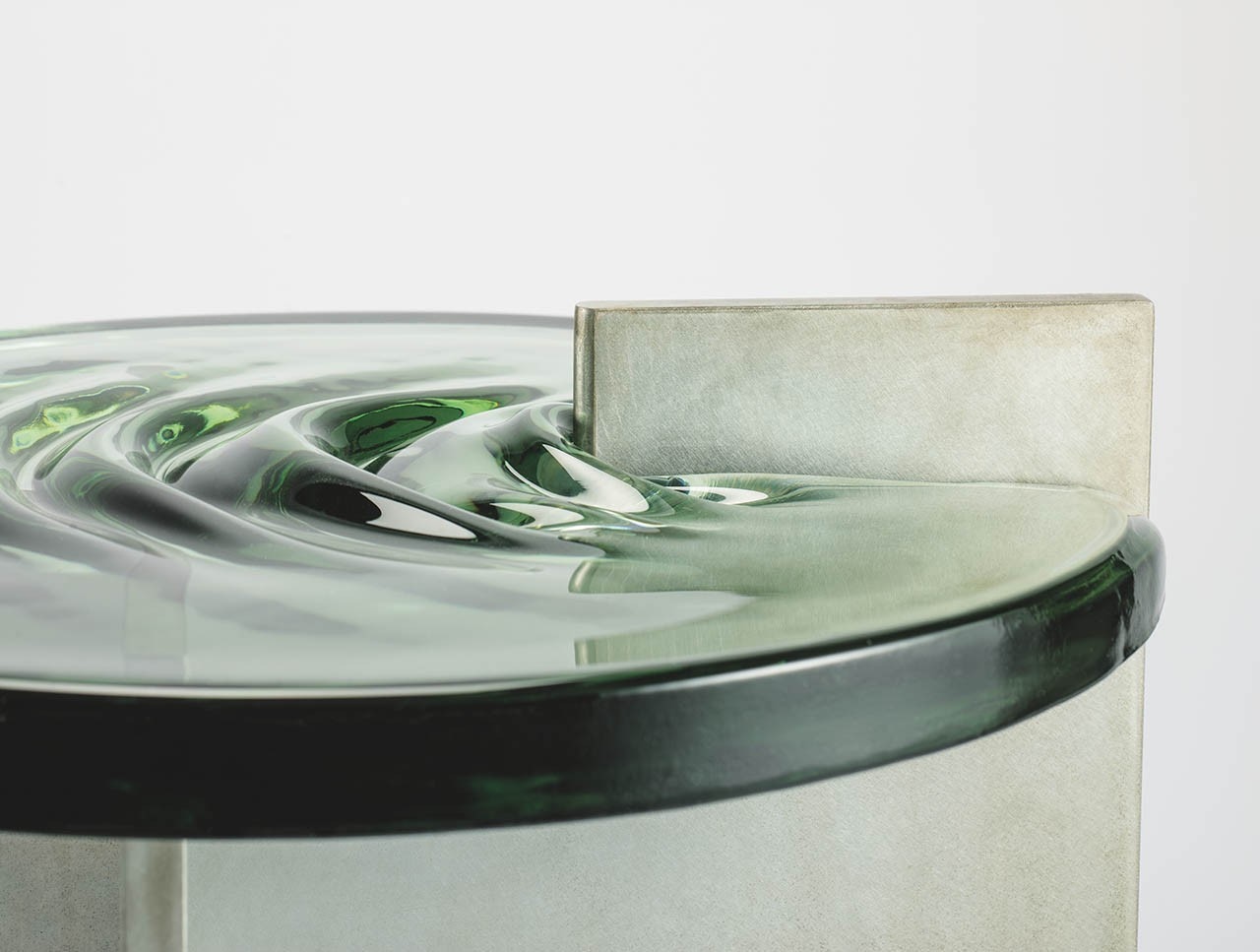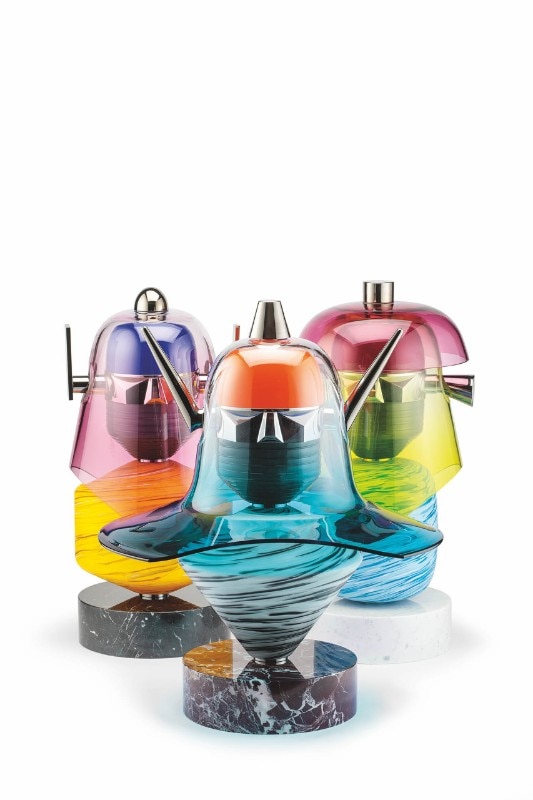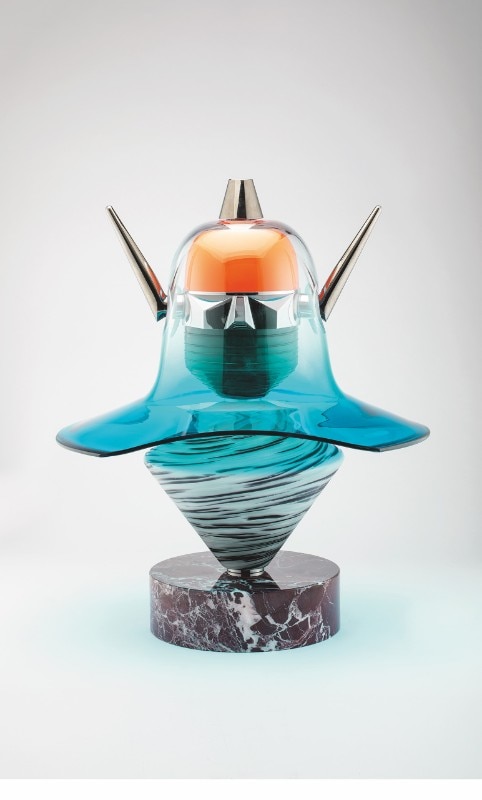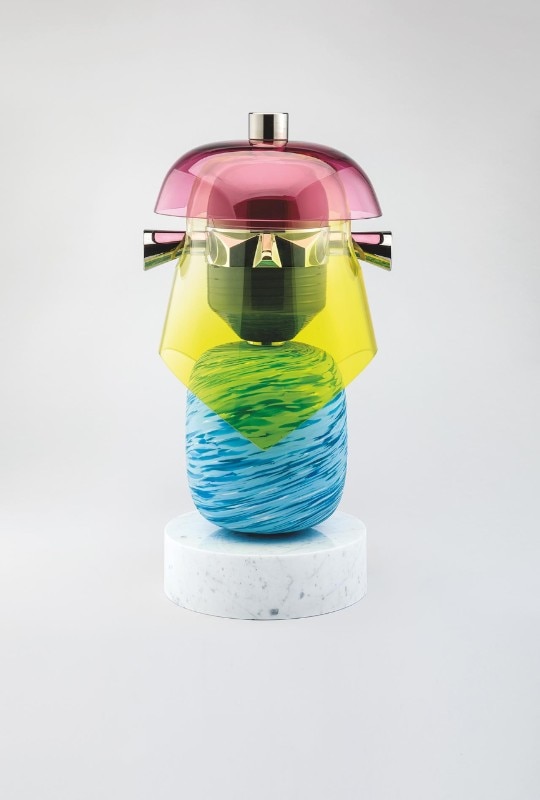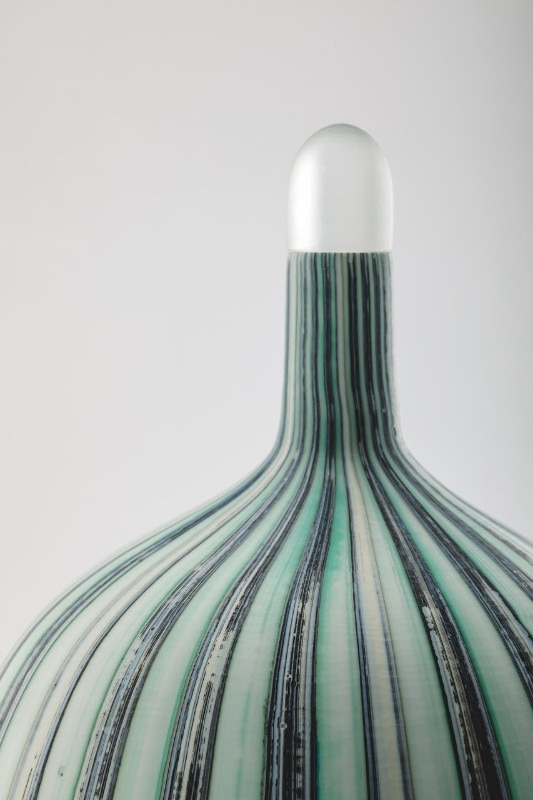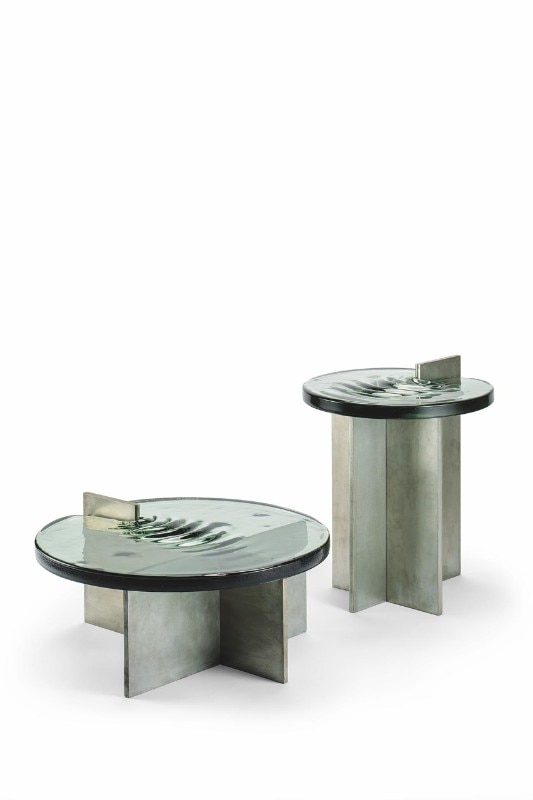As in any love-hate relationship, one always wants to slightly change what they are so closely bound to despite seeing all its dark sides. This attitude also seems to apply to Luca Nichetto, the Murano-born designer now living in Stockholm, who has returned to his hometown in the unusual role of curator of the exhibition “Emphatic. Discovering a Glass Legacy” at the InGalleria Art Gallery in Punta Conterie. The works on display, all new, available in limited edition, and rigorously made of glass, are signed by Ini Archibong, Noé Duchaufour-Lawrance, GamFratesi, Benjamin Hubert, Richard Hutten, Luca Nichetto, Elena Salmistraro and Marc Thorpe. Despite the expressive freedom of each of them, the common denominator is an interpretation that is devoid of stereotypes, yet in tune with a different, contemporary vision of what the Venice lagoon can be today. We talked about this with Luca Nichetto.
How did this exhibition come about?
The project in Murano started under the impulse of Alessandro Vecchiato, founder and former owner of Foscarini, who asked me to curate for his space in Punta Conterie Art Gallery - an incredible place that is much more than the usual glass souvenir shop - an exhibition that would enhance Murano glass through design. I immediately accepted, perhaps because when you live abroad you rediscover a stronger bond with your roots, you see them more objectively, and you also want to give something back.
The result is a kind of manifesto of what can be done in this place with this material, but also an opportunity for the inhabitants and glassworkers to show that the international community of creatives could help Murano get out of a somewhat problematic situation.
The designers you involved in the exhibition don’t have a particular background in the glass industry.
That’s true, but the idea was to find people with a background in craftsmanship who could reinterpret glass with a new sensitivity. I didn’t give them a proper briefing. The exhibition is called Emphatic because it is dictated by this personal bond - they are all friends of mine - and because it aims to re-establish this empathy with Murano glass. The Covid pandemic has certainly complicated things as far as the designers’ stay on the island is concerned, but it has been great to see how they transformed their ideas into tangible products by bringing together a whole series of partnerships and expertise and using all the glass processing techniques - there is casted, blown, cut and reeded glass. The result is a kind of manifesto of what can be done in this place with this material, but also an opportunity for the inhabitants and glassworkers to show that the international community of creatives could help Murano get out of a somewhat problematic situation.
The pieces on display seem to break away from the traditional objects made in Murano.
Fortunately, the designer’s vision breaks away from the preconceived expectations of artistic craftsmanship. The pieces are also limited editions: the investment and cost opportunity were obviously different from those of serial production, but the designers realised that they still had enough creative space.
Can you give us some examples of the pieces we will see in the exhibition?
Marc Thorpe, Gam Fratesi and Benjamin Hubert have each worked in their own way on the classic type of the vase - in the case of Marc and Gam Fratesi not so much as a single piece but as a series of pieces that create a collection, a landscape. Then Noé Duchaufour-Lawrance worked on small tables, Elena Salmistraro on a mirror, I worked on a bust, and Richard Hutten on a totem, a volume. Finally, Ini Archibong did a beautiful work on African masks, bringing together his background in the tradition of glass.
Back to the problems of Murano, the current narrative is that it is now a depopulated area with fewer and fewer businesses. It is also true that new designer artists and new events are returning to the lagoon. How do you see the lights and shadows of the district?
A lot of people have left Murano and Venice. For me, the liberalisation of licensing was the end of an already bumpy road: newsagents have become souvenir shops, trattorias have become bars for hit-and-run tourism. The structure of the shops in Venice was still closely linked to the experience of the Serenissima: you could go in the gallery under the porticoes in the Rialto and find the jewellery district there. Today, everything is gone. And then there’s Airbnb, and the big ships: a city that was already incredibly delicate has been raped, and I honestly don’t know how it is still holding up.

If you were the doge of design, what would you do?
In Murano, people still think they are the centre of the world when it comes to glass: we should start being less arrogant. There are many countries that have developed a solid culture in this field, such as the United States, Japan and China. And there are many young people who want to pursue this art and see Murano as a sort of mecca. It’s a shame that there is still great resistance to welcoming people from outside, including women, and to embracing different visions.
Is it just a matter of being wary of strangers?
It is not only that. It is also that glass production as we knew it in the 1980s is over due to the problems linked to cost competition. Murano should be redirected towards the elite, also because if we looked at the current turnovers of the various companies, we’d see that the revenues are extremely low. It would also be necessary to make the community understand that acting as a collective agent is very convenient. It is true, as you say, that there are signs of recovery, but I think they are too weak. We should work on the ground and for the local population, we should learn again to understand what quality is, in the glass field but also in the products we buy every day. We need to start again, and it should come from the bottom.


